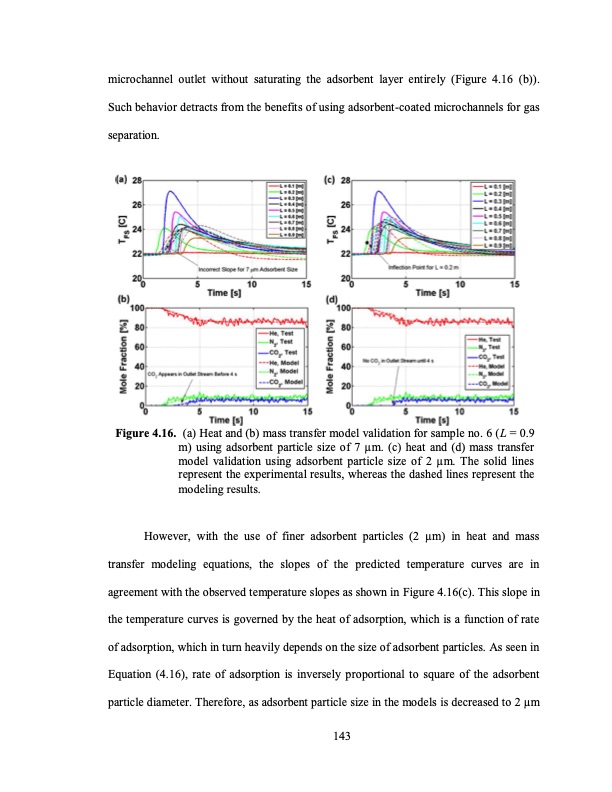
PDF Publication Title:
Text from PDF Page: 170
microchannel outlet without saturating the adsorbent layer entirely (Figure 4.16 (b)). Such behavior detracts from the benefits of using adsorbent-coated microchannels for gas separation. However, with the use of finer adsorbent particles (2 μm) in heat and mass transfer modeling equations, the slopes of the predicted temperature curves are in agreement with the observed temperature slopes as shown in Figure 4.16(c). This slope in the temperature curves is governed by the heat of adsorption, which is a function of rate of adsorption, which in turn heavily depends on the size of adsorbent particles. As seen in Equation (4.16), rate of adsorption is inversely proportional to square of the adsorbent particle diameter. Therefore, as adsorbent particle size in the models is decreased to 2 μm Figure 4.16. (a) Heat and (b) mass transfer model validation for sample no. 6 (L = 0.9 m) using adsorbent particle size of 7 μm. (c) heat and (d) mass transfer model validation using adsorbent particle size of 2 μm. The solid lines represent the experimental results, whereas the dashed lines represent the modeling results. 143PDF Image | TEMPERATURE SWING ADSORPTION PROCESSES FOR GAS SEPARATION

PDF Search Title:
TEMPERATURE SWING ADSORPTION PROCESSES FOR GAS SEPARATIONOriginal File Name Searched:
PAHINKAR-DISSERTATION-2016.pdfDIY PDF Search: Google It | Yahoo | Bing
CO2 Organic Rankine Cycle Experimenter Platform The supercritical CO2 phase change system is both a heat pump and organic rankine cycle which can be used for those purposes and as a supercritical extractor for advanced subcritical and supercritical extraction technology. Uses include producing nanoparticles, precious metal CO2 extraction, lithium battery recycling, and other applications... More Info
Heat Pumps CO2 ORC Heat Pump System Platform More Info
| CONTACT TEL: 608-238-6001 Email: greg@infinityturbine.com | RSS | AMP |